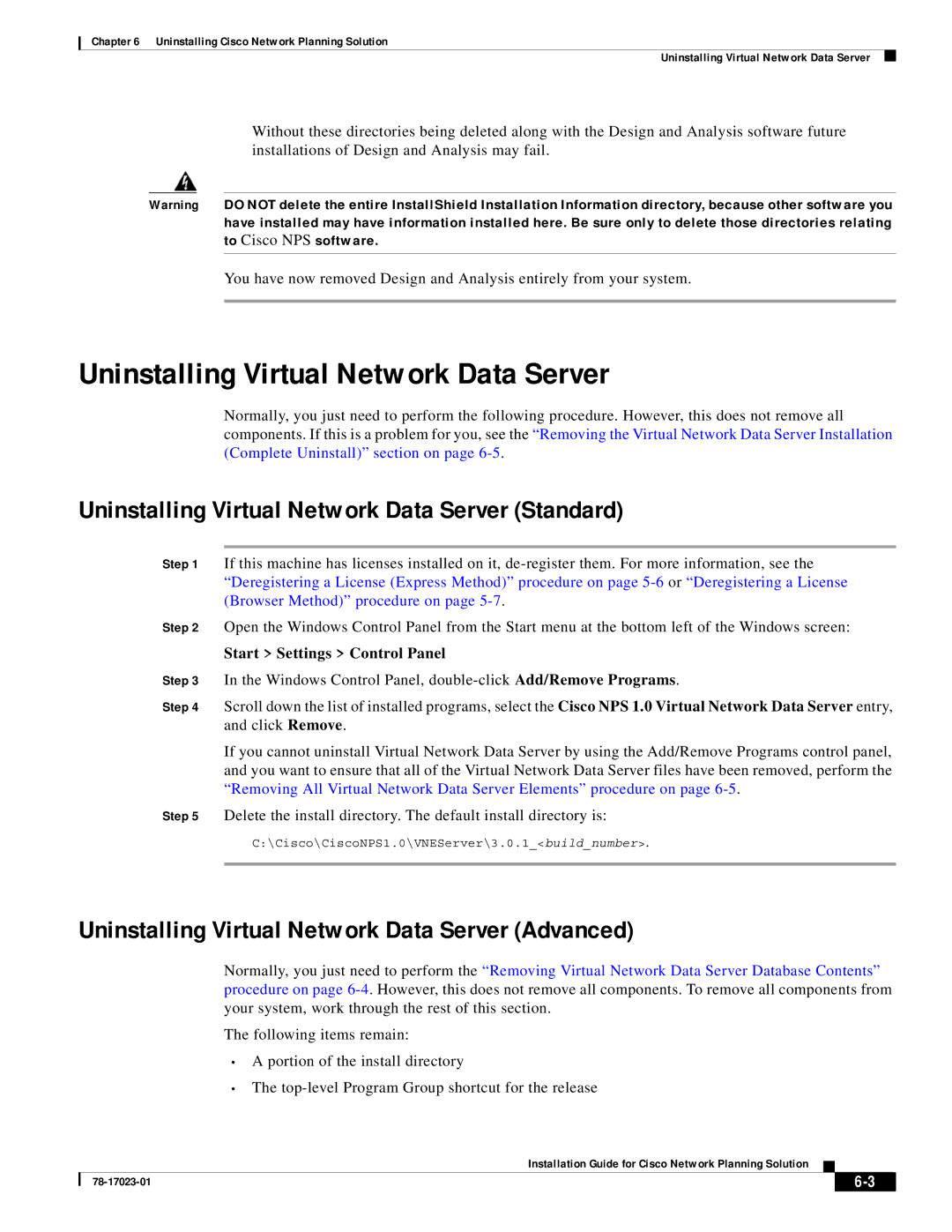
Chapter 6 Uninstalling Cisco Network Planning Solution
Uninstalling Virtual Network Data Server
Without these directories being deleted along with the Design and Analysis software future installations of Design and Analysis may fail.
Warning DO NOT delete the entire InstallShield Installation Information directory, because other software you have installed may have information installed here. Be sure only to delete those directories relating to Cisco NPS software.
You have now removed Design and Analysis entirely from your system.
Uninstalling Virtual Network Data Server
Normally, you just need to perform the following procedure. However, this does not remove all components. If this is a problem for you, see the “Removing the Virtual Network Data Server Installation (Complete Uninstall)” section on page
Uninstalling Virtual Network Data Server (Standard)
Step 1 If this machine has licenses installed on it,
Step 2 Open the Windows Control Panel from the Start menu at the bottom left of the Windows screen:
Start > Settings > Control Panel
Step 3 In the Windows Control Panel,
Step 4 Scroll down the list of installed programs, select the Cisco NPS 1.0 Virtual Network Data Server entry, and click Remove.
If you cannot uninstall Virtual Network Data Server by using the Add/Remove Programs control panel, and you want to ensure that all of the Virtual Network Data Server files have been removed, perform the “Removing All Virtual Network Data Server Elements” procedure on page
Step 5 Delete the install directory. The default install directory is:
C:\Cisco\CiscoNPS1.0\VNEServer\3.0.1_<build_number>.
Uninstalling Virtual Network Data Server (Advanced)
Normally, you just need to perform the “Removing Virtual Network Data Server Database Contents” procedure on page
The following items remain:
•A portion of the install directory
•The
Installation Guide for Cisco Network Planning Solution
|
| ||
|
|
